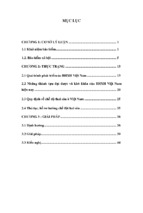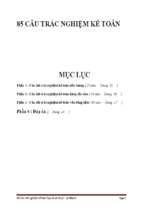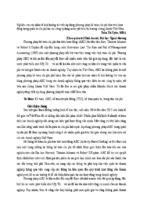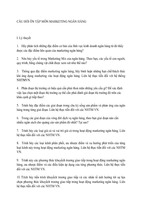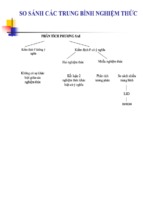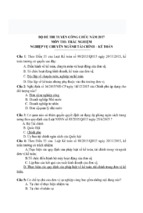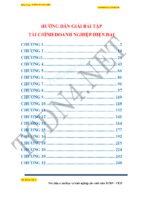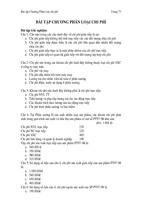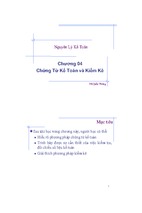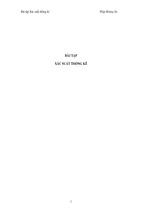www.cfa-aficionado.cjb.net
www.marbella.to/cfa-aficionado
1081 Questions +
Answers
of the
CFA EXAM
Level 1
Study Session :
Macroeconomics
(Part B)
Introduction by the Author :
Hi there, CFA fellows, here you are . You see , it doesn”t need to be an
expensive prep course to get first class preparation for the CFA exams.
The following questions are original CFA AIMR questions and not just
composed by prep course providers. They all come with a clear answer.
In order to understand why the questions are commented by “answer is
correct / incorrect” it is important to know that all questions have
automatically been responded with the first (and only the first ) answer.
Your CFA-Aficionado
[email protected]
[email protected]
And now here we go :
An economy is currently operating at full employment, with an inflation rate of 6%. The Central Bank
adopts an inflationary measure consistent with an inflation rate of 8% but people anticipate an inflation
of 7%. Then, the unemployment in the short run will be ________ the natural rate, as predicted by the
Rational Expectations Model.
* could be above or below.
* same as
* below
* above
That answer is incorrect.
Correct answer:
below
The short-run equilibrium is affected by the accuracy of the predictions made by decision-makers.
Since workers under-estimate the future inflation resulting from the changed policy, they will settle for
lower wages than those consistent with the actual inflation. Consequently, the Rational Expectations
Phillips curve predicts that unemployment will decrease in the short run. With the economy currently at
full employment, the unemployment rate will fall below the natural rate, temporarily expanding the real
GDP beyond the potential level. Over the long run, people will correct their erroneous predictions and
wages will rise to a level where full employment will prevail once again.
-----------------------------Which of the following would increase GDP?
* Mercedes-Benz begins to produce and sell cars in Alabama.
* An American investor buys 100 shares of Ford stock.
* Ford Motor Company begins to produce and sell cars in Japan.
* An American investor purchases 100 shares of Mercedes-Benz stock.
That answer is correct!
Since GDP represents the total market value of all final goods and services produced domestically
during a specific period, GDP would rise if a foreign company starts to produce cars domestically.
-----------------------------If the marginal propensity to consume (MPC) is .75 or 3/4, what is the expenditure multiplier?
* 0.25
* 4.0
* 3.0
* 2.0
That answer is incorrect.
Correct answer:
4.0
The expenditure multiplier is found according to the equation M= 1/(1-MPC). Thus, M = 1/(1-3/4) = 4.
-----------------------------Which of the following would be an example of non-activist monetary policy?
* The Central Bank attempts to counter-act negative developments in the economy.
* Inflation is the only target for the Central Bank.
* The Central Bank tries to keep the money supply constant.
* The government keeps spending constant and allows tax revenues to rise or fall to compensate for
changes in aggregate income.
* The Central Bank increases the money supply by 5% every year.
That answer is incorrect.
Correct answer:
The Central Bank increases the money supply by 5% every year.
The classic non-activist monetary policy example is to increase the money supply by a particular level
every year. Activist or discretionary monetary policy involves changing the supply of money to counteract negative developments in the economy.
-----------------------------"Counter-cyclical macroeconomic policy will be ineffective as a stabilization tool because people will
undermine the policy by adjusting their choices once they expect a systematic policy response to
recessions and booms." This statement most clearly reflects the
* Keynesian view.
* rational expectations view.
* supply-side view.
* 1960 view of the Phillips curve.
That answer is incorrect.
Correct answer:
rational expectations view.
Rational agents will weigh all of the likely economic policies in their estimation of future inflation rates.
Therefore, once a systematic policy response to recessions and booms is established, counter-cyclical
macroeconomic policy will be ineffective since it will be fully anticipated.
-----------------------------An economy which is experiencing substantial inflation and slow economic growth is said to be in:
* a contraction.
* a stagflation.
* a hyperinflation.
* a recession.
That answer is incorrect.
Correct answer:
a stagflation.
High and variable inflation rates have severe negative impact on an economy. At times, the economy
spirals into a cycle of extremely slow growth and very high inflation. This stagnant state battered by
rising prices is called "stagflation."
-----------------------------Congress proposes to stimulate the economy by cutting taxes for middle income families but raising
taxes for wealthier tax payers. The effect will be the same net taxes collected, but most tax payers
would pay less in taxes. According to which of the following economic theories would this stimulate the
economy?
I. fiscal policy
II. supply-side
III. monetary policy
* I, III
* none of these answers is correct
* III only
* I, II, III
* I only
* II only
That answer is incorrect.
Correct answer:
none of these answers is correct
Since there was no net reduction in taxes, the tax plan would not create a fiscal stimulus. Marginal tax
rates have effectively increased under this plan, implying a negative supply-side impact. Monetary
policy involves changing the money supply, which is not applicable here.
-----------------------------An increase in the nominal interest rate would
* encourage people to hold larger money balances.
* cause households to increase consumption.
* encourage people to hold smaller money balances.
* force the Fed to reduce the money supply.
That answer is incorrect.
Correct answer:
encourage people to hold smaller money balances.
The nominal interest rate represents the opportunity cost of holding money as cash-money held as
cash earns no interest. Money held in some checking accounting or other interest bearing accounts
earns a positive interest rate. Thus, money held as cash could be earning this interest rate. An
increase in the nominal interest rate encourages people to hold less money as cash and to hold more
money in interest bearing accounts since they can now earn a greater return by doing so.
-----------------------------An increase in the long-run aggregate supply curve indicates that
* unemployment has increased.
* employment has increased.
* natural unemployment has increased.
* potential real GDP has increased.
That answer is incorrect.
Correct answer:
potential real GDP has increased.
Short run increases in aggregate supply do not shift the long run potential of the economy; only
increases in the long run aggregate supply curve will effectively increase potential GDP. Short run
aggregate supply may exceed the long run potential of the economy but only temporarily.
-----------------------------Which of the following will most likely occur in the short run when the long-run equilibrium of an
economy is disturbed by an unanticipated decrease in aggregate demand?
* an increase in output and a lower price level
* a decrease in output and a higher price level
* an increase in output while prices remain unchanged
* a decrease in output and a lower price level
That answer is incorrect.
Correct answer:
a decrease in output and a lower price level
In response to a decline in aggregate demand, resources may be inflexible; that is, they may not
decline sufficiently to adjust to the reduction in aggregate demand. As a result, there will be a
recession in which output declines and prices in other markets decline.
-----------------------------In year 0, $10 could purchase a certain basket of goods. In year 20, the identical basket of goods cost
$36. What was the average annualized inflation rate during this period?
* 4.51%
* 7.88%
* 12.21%
* 30.00%
* 6.61%
That answer is incorrect.
Correct answer:
6.61%
The calculation is as follows: (36/10)^(1/20)-1=0.0661
-----------------------------Which of the following would increase GDP?
* buying a 10-year-old house
* giving $100 to a charity
* buying a new automobile made in Indiana by a Japanese owned firm
* buying hamburger buns by McDonald's
That answer is incorrect.
Correct answer:
buying a new automobile made in Indiana by a Japanese owned firm
Since GDP is the total market value of all final goods and services produced domestically during a
specific period, the purchase of any good that was produced within the U.S. will positively contribute to
the calculation of GDP. Despite the fact that the transaction profits a foreign company, the good was
produced within the U.S. and therefore is counted in GDP.
The hamburger buns do not contribute to GDP because they are an intermediate good. The house is a
re-sold item, which would have been counted in GDP when it was produced, therefore is not
recounted when sold.
-----------------------------According to the quantity theory of money, which one of the following economic variables would
change in response to an increase in the money supply?
* prices
* velocity
* real income
* employment
That answer is correct!
The quantity theory of money implies that the existing money stock M multiplied by velocity V equals
the nominal GDP (output times the price level). In order to maintain the equality, if M increases, the
price level P must also increase.
------------------------------
Higher unemployment insurance benefits tend to increase unemployment because they
* reduce the opportunity cost of job search and hence decrease the search time.
* increase the opportunity cost of job search and hence increase the search time.
* reduce the opportunity cost of job search and hence increase the search time.
* increase the opportunity cost of job search and hence decrease the search time.
That answer is incorrect.
Correct answer:
reduce the opportunity cost of job search and hence increase the search time.
A change that reduced the job seeker's cost of continued search would lead to more lengthy periods of
search. If unemployment benefits increase, it is less costly to continue looking for a preferred job. This
reduction in the cost of job search would induce job seekers to expand their search time.
Unemployment would be pushed upward.
-----------------------------Which one of the following would be classified as employed?
* an auto worker vacationing in Florida during a layoff at a General Motors plant due to an annual
change-over in models
* a parent who works 50-60 hours per week caring for family members
* a 21-year-old full-time college student
* a 17-year-old high school student who works six hours per week as a route person for the local
newspaper
That answer is incorrect.
Correct answer:
a 17-year-old high school student who works six hours per week as a route person for the local
newspaper
A person who is not actively looking for a job is not a member of the labor force and therefore is not
employed. An individual who is not a member of the formal market and works at home without wages
is not a member of the formal labor force. An auto worker who is waiting to be re-hired or who was laid
off is considered unemployed.
-----------------------------If unemployment was deemed too high by policy makers, which of the following policy tools might be
utilized?
* decrease the money supply
* borrow to finance new military spending
* reduce government debt
* increase target interest rates
* reduce both taxes and government spending
* raise tariffs to help domestic workers
That answer is incorrect.
Correct answer:
borrow to finance new military spending
One method to reduce unemployment is to engage in expansionary fiscal policy. This requires the
government to spend more than it collects in taxes. The result is a net increase in aggregate demand,
which will increase the quantity supplied, and therefore reduce unemployment.
-----------------------------An increase in the expected future inflation rate will:
* move the short-run supply curve to the left.
* move the short-run supply curve to the right.
* move the long-run supply curve to the right.
* move the long-run supply curve to the left.
That answer is correct!
An increase in the expected future inflation rate will have two impacts. First, sellers will have reduced
incentive to sell at current prices; they would rather store the current production for future sales at
higher prices. Secondly, resource suppliers, to the extent that they anticipate the higher inflation, will
increase the resource prices in their contracts. Both these factors will serve to reduce the quantity the
producers will be ready to supply at any given price, moving the short run supply curve to the left. The
long-run supply curve will not be affected since over that period, all adjustments to the expected future
conditions will have been made, restoring the equilibrium.
-----------------------------Countries A and B have the same monetary base and reserve requirement. People in A tend to hold
more currency than people in B. The money supply will be:
* higher in B
* same in the two countries.
* insufficient information.
* higher in A
That answer is correct!
When people hold currency instead of bank deposits, the money goes out of circulation temporarily
and the full impact of the deposit expansion multiplier is not felt. The higher this tendency to hold
currency, the lower will be the money supply, even though the monetary base has not been affected.
-----------------------------According to Say's law, there cannot be overproduction of goods and services because
* overproduction will lead to higher unemployment, which will reduce production.
* demand creates its own supply.
* less fortunate countries will always buy the excess output.
* producing goods generates enough income to buy the total output.
That answer is incorrect.
Correct answer:
producing goods generates enough income to buy the total output.
Say's Law is the view that production creates its own demand. Demand will always be sufficient to
purchase the goods produced because the income payments to the resource suppliers will equal the
value of the goods produced.
-----------------------------The crowding-out model implies that a
* budget surplus will be highly effective against inflation.
* budget deficit is likely to stimulate aggregate demand and trigger a multiplier effect that will lead to
inflation.
* budget deficit will increase the real interest rate and thereby retard private spending.
* budget surplus will retard aggregate demand and throw the economy into a downward spiral.
That answer is incorrect.
Correct answer:
budget deficit will increase the real interest rate and thereby retard private spending.
The crowding out theory implies that government borrowing drives up real interest rates and thus
crowds out" private investment. Private investment falls under higher interest rates because the cost of
investment (the real interest rate) rises if the government borrows heavily. Under the usual law of
supply and demand, the government causes the interest rate to rise under deficit spending because
there is a limited supply of loanable funds. The government competes with the private sector for these
resources and thus drives up the price (i.e., the interest rate).
-----------------------------Within the Keynesian model, equilibrium output takes place ________.
* when actual and expected rates of inflation are equal
* when the nominal interest rate and real interest rate are equal
* when spending equals output
* at full employment
That answer is incorrect.
Correct answer:
when spending equals output
Equilibrium is defined in this model as when aggregate expenditures are equal to output. Thus, the
sum of planned consumption, investment government purchases and the difference between exports
and imports must equal GDP.
-----------------------------If a broad increase in the price of stocks causes an increase in the real wealth of individuals, then the
* aggregate demand curve will shift to the left.
* aggregate demand curve will shift to the right.
* general price level will fall.
* aggregate quantity demanded must rise.
That answer is incorrect.
Correct answer:
aggregate demand curve will shift to the right.
As the real wealth of households increases, people demand more goods and services. This causes
the entire aggregate demand curve to shift to the right.
-----------------------------A client tells you that he currently earns $100,000 per year and is comfortable with his lifestyle at that
income level. He says he is planning on retiring in 5 years. If inflation averages 8% over the next 5
years, approximately what income level will this client require to maintain his current lifestyle?
* $147,000
* Not enough information
* $169,000
* $122,000
* $140,000
That answer is correct!
The calculation is as follows: (1.08)^(5)*100000=$146,933
-----------------------------Use the table below to choose the correct answer.
Time Period
Actual Inflation
1
2
3
4
4 percent
4 percent
6 percent
8 percent
According to the adaptive expectations hypothesis, at the beginning of period 3, decision makers
would expect inflation during period 3 to be ________.
* 6 percent
* 5 percent
* 8 percent
* 4 percent
That answer is incorrect.
Correct answer:
4 percent
Under the adaptive expectations hypothesis economic agents base their future expectations on actual
outcomes observed during recent periods. Thus, the most recent periods suggest an inflation rate of 4
percent will persist in the future.
-----------------------------Which of the following is/are components of the M3 money supply?
I. Overnight repos
II. Overnight Eurodollar deposits
III. M1 supply
IV. M2 supply
* I, II, III & IV
* II & IV
* III & IV
* II, III & IV
That answer is correct!
Note that the M3 supply is the broadest definition of money supply and hence, anything that fits into
the definition of money supply is automatically a part of M3.
-----------------------------Congress passes a law requiring the government to pay certain debts of companies that have
declared bankruptcy. Which of the following terms most accurately describes this program?
* supply-side
* automatic stabilizer
* expansionary fiscal policy
* moral hazard
* none of these answers is correct
* monetary policy
That answer is incorrect.
Correct answer:
automatic stabilizer
An automatic stabilizer is anything that would decrease the government budget surplus during slow
economies and increase the surplus during strong economic periods. During slow economic periods,
bankruptcies are likely to rise, and by paying a portion of the defunct firms' debts, the government is
injecting demand into the economy. This should be distinguished from an expansionary fiscal policy,
because the program is not designed to expand national income, but to stabilize a slowdown without
the need for further government action.
-----------------------------The "extra" money you take on a trip in case your car breaks down is an example of the
* transactions demand for money.
* inflationary demand for money.
* restrictive demand for money.
* speculative demand for money.
* precautionary demand for money.
That answer is incorrect.
Correct answer:
precautionary demand for money.
Precautionary demand for money is defined as a demand for cash balances in case of unforeseen
circumstances which require money.
------------------------------
Mr. Taylor states in his will that his $50,000 portfolio of bank CD's will go to his only son. Upon Mr.
Taylor's death, the son sells the CD's and invests the proceeds in a stock mutual fund.
How does this immediately impact M2 and the effective amount money available for transactions?
* both decrease
* decrease, increase
* no change, decrease
* both increase
* no change for either
* decrease, no change
* increase, decrease
That answer is incorrect.
Correct answer:
decrease, no change
Prior to Mr. Taylor's death, the CD's were counted as part of M2. In addition, this money was not used
for current consumption. After the sale of the CD's, the money is still not being used for current
consumption, but it is now not counted as part of M2. The real level of money in circulation has not
changed here, but the measure of the money supply has decreased. This is an example of a distortion
of money supply measures.
-----------------------------Given the information below, during which quarters does real income decline?
Nominal GDP
Q 0 (base) 981
Q1
993
Q2
1,001
Q3
1,042
Q4
1,040
GDP Deflator
100
101
106
111
107
* all four quarters
* none of these answers is correct
* 2,3
* 4 only
* 2,3,and 4
* not enough information given
That answer is incorrect.
Correct answer:
2,3
Real income is measure by real GDP. The first step in this problem is to calculate real GDP in each
period by multiplying nominal GDP by the base GDP deflator and then dividing by the current GDP
deflator. The result is as follows:
Q1
Q2
Q3
Q4
983
944
939
972
Therefore real income declines in the second and third quarters.
------------------------------
Within the Keynesian model, when planned aggregate demand equals total output,
* the employment rate will equal the labor force participation rate.
* government expenditures will equal revenues.
* the output level will tend to persist into the future.
* income in the future will tend to rise.
That answer is incorrect.
Correct answer:
the output level will tend to persist into the future.
Because Keynesian equilibrium is dependent on equality between planned aggregate expenditures
and output, it need not take place at full employment. An economy in Keynesian equilibrium has no
tendency for output to change even if output is well below full employment capacity.
-----------------------------Suppose that the Central Bank announces that it will increase the money supply by 5%. Producers
collectively determine that this will cause a 5% increase in both the price of their products and the cost
of their inputs. How will this impact real GDP?
* increase by more than 5% in the short-run
* increase by an indeterminate degree in the short-run
* cannot determine without knowing whether GDP is below potential
* increase by less than 5% in the short-run
* increase by 5%
* no impact
That answer is incorrect.
Correct answer:
no impact
In order for an increase in the money supply to cause a temporary increase in production, firms must
essentially be fooled by inflationary price increases that are misread as an increase in demand. In the
scenario described, producers know of the change in money and expect inflation, therefore the
increase in the money supply has no impact.
-----------------------------If the amount of money in circulation is $200 million and the nominal GDP is $950 million, then the
money velocity is ________.
* 1.90
* 4.75
* 0.21
* 19.0
That answer is incorrect.
Correct answer:
4.75
Velocity of money is defined as GDP divided by the stock of money. It is simply the average number of
times a dollar is used to purchase a final product or service during a year. Thus, $950 million divided
by $200 million equals 4.75.
-----------------------------According to the Keynesian view of the business cycle, a decline in income generally follows an
economic boom because a(n)
* decrease in the growth rate of consumption (as the full-employment output is reached) leads to a
consequent decline in investment, employment and income.
* increase in the growth rate of consumption (as the full-employment output is reached) sets off an
inflationary spiral as the multiplier interacts with the accelerator.
* decrease in the investment multiplier leads to an increase in saving.
* increase in the investment multiplier leads to a decrease in saving.
That answer is correct!
Slower growth must follow an expansionary period; this dampens optimism among decision makers
and causes fixed investment and consumption to fall. The multiplier magnifies increased pessimism
and leads to a reduction in output and income.
-----------------------------If unemployment were 3 percent and prices were rising 12 percent annually, which of the following
would be the most appropriate policy?
* the sale of U.S. securities by the Federal Reserve
* a decrease in the Fed's reserve requirements
* a reduction in the discount rate
* an increase in planned government expenditures
That answer is correct!
The sale of U.S. securities by the Fed will result in a contraction of the money supply. This contraction
will precipitate price deflation as the same number of transactions must now be conducted with a
smaller amount of money. The Fed's policy would serve to contain inflation.
-----------------------------Each month, the Bureau of Labor Statistics calculates unemployment by
* making projections based on census data.
* surveying large business and government employers.
* surveying all workers in the economy.
* surveying a random sample of households.
That answer is incorrect.
Correct answer:
surveying a random sample of households.
The BLS does not contact each person in the U.S. to determine his or her employment status. Instead,
it randomly samples 59,500 households drawn from 729 locations in the U.S. The survey is designed
to reflect geographic and demographic groups in proportion to their representation in the nation as a
whole.
-----------------------------If the Fed conducts a demand stimulus policy, the rational expectations theory implies that
* the slope of the Phillips curve will increase.
* unemployment will temporarily fall below the natural rate.
* the Phillips curve immediately shifts upward.
* the natural unemployment will rise.
That answer is incorrect.
Correct answer:
the Phillips curve immediately shifts upward.
Under rational expectations people quickly anticipate the effect of policy changes and adjust their
actions accordingly. Thus, under a demand stimulus policy the Phillips curve immediately shifts
upward because individuals anticipate an acceleration in the inflation rate due to the more
expansionary macropolicy.
-----------------------------If the resources of an economy were fully employed and the marginal propensity to consume were
0.75, a $10 billion increase in investment would cause
* real income to rise $40 billion.
* real income to rise $80 billion.
* real income to rise $20 billion.
* inflation to increase.
That answer is incorrect.
Correct answer:
inflation to increase.
When the economy is operating at full employment capacity, increases in aggregate demand cannot
be accommodated by increases in output. Instead, increases in aggregate demand are met simply by
price increases due to the heightened competition for output.
-----------------------------The consumer price index (CPI) is calculated
* using a fixed basket of goods and will tend to understate inflation.
* using a constantly changing basket of goods and will tend to understate inflation.
* using a constantly changing basket of goods and will tend to overstate inflation.
* using a fixed basket of goods and will tend to overstate inflation.
That answer is incorrect.
Correct answer:
using a fixed basket of goods and will tend to overstate inflation.
The consumer price index is calculated using a market basket based on the Consumer Expenditure
Survey of urban consumers. There are 364 items in the market basket. The CPI compares the price of
the fixed market basket in the base year with the price of the fixed market basket in the current year to
determine how prices have changed over time.
-----------------------------Which of the following will most likely result in an increase in the per capita GDP of a country?
* an increase in population
* improvement in the average skill level of the labor force
* an increase in youthful workers as a proportion of the labor force
* an increase in the number of retired workers
* an increase in the GDP deflator
That answer is incorrect.
Correct answer:
improvement in the average skill level of the labor force
Education, training and skill enhancing experience can improve the quality of the labor force and
expand the supply of human resources. Such a change causes the potential output of the country to
increase so that it is possible to produce and sustain a larger rate of output (in nominal and per capita
terms).
-----------------------------In a situation where information is costly to acquire and individuals must spend time searching for jobs,
which type of unemployment will result?
* structural
* seasonal
* frictional
* cyclical
That answer is incorrect.
Correct answer:
frictional
Frictional unemployment is due to constant changes in the economy that prevent qualified
unemployed workers from being immediately matched up with existing job opening. It results from the
scarcity of information and the search activities of both employers and employees for information that
will help them make better employment choices.
-----------------------------Which of the following would be considered non-activist monetary policy?
* The government allows tax revenues to rise and fall with the business cycle, while keeping spending
constant.
* The Central Bank acts to smooth the business cycle.
* The Central Bank attempts to keep inflation at a minimum, ignoring unemployment.
* The Central Bank prints new currency each year in order to increase the money supply by 3%.
* The Central Bank targets short-term interest rates.
That answer is incorrect.
Correct answer:
The Central Bank prints new currency each year in order to increase the money supply by 3%.
An activist monetary policy involves a changing policy in reaction to economic events. A classic
example of non-activist policy would be one that increases the money supply by a certain amount
each year.
-----------------------------In the Keynesian aggregate expenditure model, the larger the marginal propensity to consume,
* more consumption expands as the result of a decline in investment.
* greater the marginal propensity to save.
* the smaller the multiplier.
* greater the change in income derived from a given change in private investment.
That answer is incorrect.
Correct answer:
greater the change in income derived from a given change in private investment.
The expenditure multiplier is found by M = 1/(1-MPC). Thus, the larger the MPC the larger the
multiplier. The multiplier magnifies changes in aggregate expenditure into larger changes in aggregate
output. the larger the multiplier then, the greater the change in income derived from a given change in
private investment.
-----------------------------When financing a budget deficit, the government might borrow money from ________.
* a central bank
* individuals
* all of these answers
* businesses
* foreigners
That answer is incorrect.
Correct answer:
all of these answers
The government can borrow money from the central bank, from private businesses, private citizens
and foreigners.
-----------------------------If consumption equals 1,100 when disposable income is 1,200 and increases to 1,400 when
disposable income goes to 1,600, what are the marginal propensities to consume and to save?
* MPC = 1/5; MPS = 4/5
* MPC = 2/3; MPS = 1/3
* MPC = 3/4; MPS = 1/4
* MPC = 1/3; MPS = 2/3
That answer is incorrect.
Correct answer:
MPC = 3/4; MPS = 1/4
Since the MPC is determined according to the ratio: MPC = additional consumption divided by
additional income, the MPC here equals: 300/400 = .75. MPS = 1-MPC so MPS = .25.
-----------------------------Keynesians believe that a discretionary fiscal policy:
* is destabilizing due to difficulty in timing and should not be used actively.
* is ineffective since people rationally anticipate its future effects.
* none of these answers.
* is not as effective as the monetary policy in controlling unemployment.
That answer is incorrect.
Correct answer:
none of these answers.
Keynesians believe that aggregate demand has a major influence. They maintain that suppliers will
produce at a level consistent with anticipated aggregate demand. Hence, to increase economic
production when the economy is operating below capacity, Keynesians advocate spurring the demand
in the market through the use of an expansionary fiscal policy.
-----------------------------Which of the following is/are true about monetary policy?
I. The money supply is neutral in the long-run.
II. Monetary policy can only serve to decrease economic volatility.
III. Of the monetary aggregates, Central Bankers only have direct control over the monetary base.
* I, II, III
* III only
* I only
* I, III
* none of these answers is correct
* II only
That answer is correct!
In the long-run, relative prices are important, not the price level itself. To understand why, imagine if
your salary increased by ten times but so did the price of all the goods you buy. This would be a
neutral event.
If money is neutral, then monetary policy can have no long-term effect. However, in the short-term,
changes in the price level can cause producers to change their production choices, ostensibly helping
to smooth out the business cycle.
Central Bankers generally have control over the bank reserve requirement and the level of currency.
They do not have control over the amount of currency individuals put into deposit accounts which
could later be lent out by banks. Hence, Bankers control the monetary base, but not other money
aggregates such as M2 and M3.
------------------------------
Keynesian analysis suggests that a planned budget surplus
* will affect aggregate demand only if the money supply decreases by the size of the surplus.
* is proper during periods of inflation but may increase unemployment if timed improperly.
* will stimulate output and employment.
* will stimulate both consumption and income.
That answer is incorrect.
Correct answer:
is proper during periods of inflation but may increase unemployment if timed improperly.
Keynesians support "counter-cyclical" polices: that is, under an inflationary/full capacity economy, the
government should reduce spending (operate under a budget surplus) to contract aggregate demand
and control economic growth so as to avoid high levels of inflation. Thus, a budget surplus is
appropriate during periods of inflation. If such a policy is enacted when the economy is below full
capacity, the proper counter-cyclical policy for the government is to deficit spend. Thus, if the
government operates under a budget surplus in this situation, aggregate demand will further contract
and unemployment will increase.
-----------------------------Within the Keynesian aggregate expenditure model, the central catalyst that leads to changes in
output and employment is changes in
* prices.
* aggregate supply.
* wage rates.
* aggregate expenditures.
That answer is incorrect.
Correct answer:
aggregate expenditures.
Aggregate expenditures are the catalyst of the Keynesian model. Until full employment is attained,
supply is always accommodative. Increases in aggregate expenditures thus lead to an expansion in
both output and employment as long as the economy is operating below potential capacity.
-----------------------------Built-in features that tend to promote a budget deficit during a recession and a budget surplus during
an inflationary boom are known as ________.
* automatic stabilizers
* counter-cyclical policies
* active budget deficits
* restrictive fiscal policies
That answer is correct!
Such built-in stabilizers exist independently of any policy change: tax revenues necessarily fall during
a recession (as the economy contracts, there is less income to tax) and government expenditures
necessarily rise (more individuals receive government transfers such as unemployment benefits or
welfare payments). The converse is true for an inflationary environment: tax revenues are in excess of
government expenditures creating a budget surplus. The consequence of these automatic reactions is
that during a recession, the economy is stimulated by higher government spending and during inflation
economic activity is reduced by smaller government spending.
-----------------------------If business decision makers suddenly become more optimistic about future sales and profits, which of
the following will most likely occur?
* The interest rate will fall, causing both investment and GDP to rise.
* Income will increase and actual saving will remain constant.
* Actual investment will increase but consumption will decrease, leaving GDP unchanged.
* Investment will increase, causing both aggregate demand and GDP to increase.
That answer is incorrect.
Correct answer:
Investment will increase, causing both aggregate demand and GDP to increase.
If business decision makers are optimistic about the future, they will increase their private investment
and stimulate other parts of the economy. Thus, aggregate demand and aggregate output will
increase.
-----------------------------Which one of the following will most likely cause a future increase in a country's sustainable level of
real output?
* an increase in income redistribution payments from high- to low-income recipients
* a decline in the nation's oil reserves
* higher marginal tax rates
* an increase in the national debt
* an increase in the economy's net investment rate
That answer is incorrect.
Correct answer:
an increase in the economy's net investment rate
Net investment can increase the supply of physical capital which makes it feasible for the economy to
produce a higher level of output permanently into the future. Investment in physical capital can expand
the supply of buildings, machines and other physical assets. This allows the economy to produce and
sustain a large rate of output, shifting both LRAS and SRAS to the right.
-----------------------------Assume that Polaroid decides to build a camera-research facility in Twin Falls, Idaho. The plant will
employ 1,000 workers who will be guaranteed full-time jobs at annual earnings of $25,000. If the
marginal propensity to consume in Twin Falls is 3/4, what change in income will result from operation
of the plant for one year?
* $75 million
* $50 million
* $25 million
* $100 million



